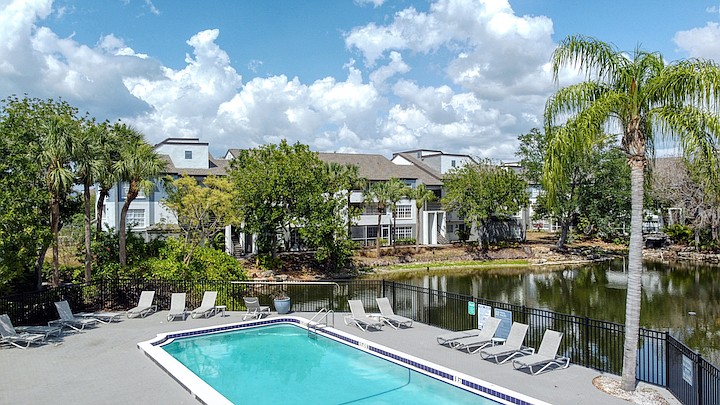- April 10, 2025
-
-
Loading

Loading

A Fort Myers apartment complex has sold for more than $120 million to a Dallas real estate investment firm that specializes in sales/leaseback transactions.
The sale was completed in March, with Cardinal Capital Partners paying $122.5 million for the 936-unit The Lennox Apartment Homes on Red Cedar Drive, according to Lee County property records.
Although the number might seem astronomical, the seller, Lurin Capital, also of Dallas, bought the property just shy of three years ago for $109 million. And, when broken down to a per-unit price, the complex brought $130,000 per door.
That is far below the $229,780 per-unit average price multifamily properties were selling for last year, according to data from Real Capital Analytics, provided by Colliers.
And it’s also far below the per-unit price two Fort Myers apartment complexes sold for in February — the 640-unit Retreat at Vista Lake brought $217,968.75 per door, and the 300-unit Las Palmas brought $363,000 per door.
Both those properties also appreciated far more than Lennox. Retreat sold for $139.5 million, up from the $96 million the previous owner paid in October 2020, more than a year after Lurin bought Lennox. The 45.31% in appreciation is slightly less than four times the 11.9% Lennox appreciated.
“To be honest, I am actually curious why the sales price is so low. … There might be some additional concessions or a percentage of maintained ownership from the seller, … which doesn’t always make the public record,” says Ryan Anderson, vice president of development at Alzada Co., a real estate development firm in Fort Myers. “There are usually many aspects of these transactions that never see the light of day.”
For now, the details of the Lennox sale remain a mystery as well. Neither Cardinal Capital nor Lurin Capital responded to questions about the sale.
It is possible, of course, that Lurin sold the property at the lower per-unit price for any of a number of reasons. Among them could be that the property, built in 1989, is in need of significant work or that about $13 million was a solid return.
One other possibility is Cardinal bought it with the intention of leasing it back to Lurin.
Although that might seem out of the ordinary, Capital says on its website that its transaction model allows “clients to maintain operational control of strategic assets. Clients also benefit from greater liquidity, improved financial metrics, tax benefits and the opportunity to dedicate capital towards core growth objectives.”
How common sale-leasebacks are for apartment complexes is unclear. But the concept is not that unusual in commercial real estate, with cash-strapped businesses and retailers selling company-owned real estate to raise capital and then renting it back from new owners.
Whatever the reason Lurin decided to sell at what it did, the multifamily market remains hot in Fort Myers, as apartment complexes continue to trade hands at record-breaking prices with no sign, at least yet, of cost increases slowing down.
And it's not just happening on the west coast of Florida.
According to Freddie Mac’s Multifamily Apartment Investment Market Index report released March 22, in the past year property prices have grown 19.6%, nationally mortgage rates have increased by six basis points, and net operating incomes have grown by 17.7%. That led to a 4.8% decrease in the index in the fourth quarter of 2021. (AIMI, as it’s known, is an analytical tool that combines multifamily rental income growth, property price growth and mortgage rates to provide a single index to measure investment conditions, according to Freddie Mac.)
“The year-over-year AIMI decline shows us that it may be more difficult now to find attractive multifamily investment opportunities in some markets than it was a year ago,” Steve Guggenmos, vice president of research and modeling at Freddie Mac Multifamily, says in the report. “Even though we’re seeing off the charts net operating incomes, prices are also rising dramatically. In most markets, investors are paying more per dollar of property income compared with one year ago.”
As for Anderson, he says locally “there does not appear to be anything to slow us down in the near term.”
“Hopefully, the influx of residential brings with it the needs for additional retail and office that typically follow these types of trends in more urban settings.”